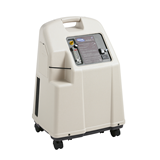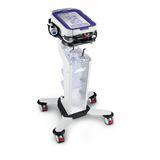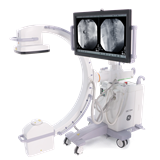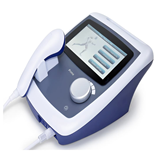A complete guide to funding your physio clinic’s machines. Includes rates, lender tips, tax write-offs, and smart lease vs loan comparisons.
Key takeaways
- Australian physiotherapy market growth: The physiotherapy industry is projected to grow at a CAGR of 3.7% through 2028, driven by increasing demand for rehabilitation and wellness services.
- Typical equipment financing costs: Financing physiotherapy equipment typically involves interest rates between 6.5% and 13.5% per annum in 2025, depending on credit profile and loan type.
- Leasing vs loans: Leasing spreads costs with lower upfront payments and greater flexibility, ideal for technology that evolves rapidly, like electrotherapy devices. Loans or hire purchase are better for long-term ownership of durable assets like treatment tables and ultrasound machines.
- Average equipment costs: Machines such as ultrasound units range from $10,000 to $30,000, while advanced rehab machines or shockwave therapy devices can cost $40,000+.
- Securing finance: Having at least 12 months of trading history, up-to-date BAS statements, and clear cash flow forecasts can improve approval chances and secure better interest rates.
- Government incentives: SMEs can still benefit from small business instant asset write-offs for eligible equipment purchases up to $20,000, reducing taxable income.
Introduction
As a physiotherapy clinic owner in Australia, investing in the right machines is essential to deliver effective patient care and stay competitive. However, physiotherapy equipment — ranging from ultrasound and electrotherapy units to specialised rehabilitation devices — can represent significant upfront costs. Financing these machines through leases, loans, or hire purchase agreements offers a strategic way to manage cash flow and scale your practice sustainably.
This comprehensive guide will walk you through the financing options available, their pros and cons, how to prepare your clinic to secure funding, and key insights to help you make informed decisions. Whether you’re upgrading existing machines or expanding your services, this guide is designed specifically for Australian physiotherapy clinics in 2025.
Understanding your physiotherapy equipment financing options
Leasing physiotherapy equipment
Leasing is increasingly popular among physiotherapy clinics because it offers flexibility and lower initial costs.
- What is leasing?
- Leasing involves paying a monthly fee to use equipment over a fixed term (usually 12 to 60 months). You don’t own the equipment unless you exercise a purchase option at the end.
- Types of leases:
- Operating lease: Lower monthly payments, no ownership, treated as an operating expense.
- Finance lease: Higher payments, with the possibility to own the asset at term end, often including a balloon payment.
- Benefits of leasing:
- Lower upfront cost preserves working capital for staffing or marketing.
- Full tax deductibility of lease payments as business expenses (ATO guidelines).
- Flexibility to upgrade to newer technology every few years — crucial for rapidly evolving machines like shockwave therapy units or electrotherapy devices.
- Off-balance sheet treatment can improve financial ratios and borrowing capacity.
- Risks and considerations:
- No equity unless purchasing at lease end.
- Higher total cost compared to outright purchase.
- Potential early termination fees.
- Typical costs:
- Leasing payments for machines such as ultrasound devices or electrotherapy units often range between $300 to $1,200 per month depending on the machine value and lease term.
Loan and hire purchase financing
For clinics wanting to own their equipment outright, loans and hire purchase agreements are viable options.
- What is hire purchase?
- You pay the equipment cost in instalments and own the machine after the final payment. It typically requires a deposit (10-20%) and fixed monthly repayments.
- What is a loan?
- A chattel mortgage or unsecured business loan funds the entire purchase price upfront, and repayments are made over time. Equipment is owned immediately.
- Benefits:
- Full ownership provides asset equity on your balance sheet.
- Tax deductions available on depreciation and interest costs (ATO rules).
- Greater freedom to modify or rebrand equipment.
- Useful for bundling multiple assets or clinic fitouts.
- Risks:
- Larger upfront cash outlay or deposit.
- Stricter credit requirements and possible need for guarantors.
- Higher monthly repayments compared to leasing.
- Typical rates and terms:
- Interest rates range from 6.5% to 13.5% p.a.
- Loan terms vary between 12 to 84 months.
- Deposit requirements vary but often sit around 10-20%.
How to prepare your clinic for physiotherapy equipment financing
Improve credit readiness
Lenders typically look for:
- Minimum 12 months of trading history, ideally profitable.
- Up-to-date BAS statements and financial records.
- Clear and realistic cash flow forecasts showing repayment capacity.
- Good personal and business credit scores.
Gather necessary documentation
- Australian Business Number (ABN).
- Recent financial statements or tax returns.
- Equipment quotes or invoices from suppliers.
- Business plan or growth projections (for startups).
Tips to secure better terms
- Shop around with specialist equipment finance brokers who understand the healthcare sector.
- Consider low-doc finance options if documentation is limited but projections are strong.
- Negotiate for deferred payment options or seasonal repayments to ease cash flow pressures.
- Explore government grants or incentives such as the small business instant asset write-off (up to $20,000 per asset for eligible purchases).
Matching equipment types with financing models
When considering financing options for different types of physiotherapy equipment, it's important to match the equipment to the best-suited financing model based on cost, usage, and technology lifecycle:
- Treatment tables and plinths typically cost between $1,500 and $8,000. Because these are durable items designed for long-term use, loans or hire purchase agreements are usually the preferred financing methods.
- Ultrasound therapy units range from $10,000 to $30,000. These high-value machines have a long lifespan, making loan or hire purchase financing the best option for clinics aiming for ownership.
- Electrotherapy machines generally cost between $8,000 and $20,000. Since this technology evolves frequently, leasing or loans are recommended, with leasing preferred due to its flexibility in upgrading.
- Shockwave therapy devices can be priced from $30,000 to over $50,000. As these are high-tech devices subject to rapid advancements, clinics often choose leasing or hire purchase, with leasing providing more flexibility to keep pace with new innovations.
- Rehabilitation exercise machines typically cost $15,000 to $40,000 or more. For these long-term assets, loans or hire purchase agreements are usually the best fit, enabling full ownership.
Frequently asked questions (FAQs)
What is the fastest way to get financing approval for my physiotherapy machines?
Low-documentation leases and hire purchase agreements often approve within 1-3 business days if you have key documents ready (ABN, BAS statements, equipment quotes). Full loan approvals may take 5-10 business days.
Can I finance second-hand physiotherapy equipment?
Yes, but options are more limited. Loans and hire purchase agreements are more common than leasing for used equipment. Ensure the machine is in good condition with service history and on the lender’s approved asset list.
Are there tax benefits to leasing vs buying?
Leasing payments are fully tax-deductible as operating expenses. Buying (loan or hire purchase) allows you to claim depreciation and interest costs. Consult a tax professional to align financing with your clinic’s structure.
Can I finance accessories, installation, or training costs?
Many lenders allow bundling of associated costs like installation, consumables, training, and service plans within the finance agreement, especially under loans or chattel mortgages.
How do interest rates vary between finance options?
Leasing rates tend to be slightly higher due to added flexibility, ranging from 7% to 14%. Loans and hire purchase interest rates usually range from 6.5% to 13.5%, depending on creditworthiness and loan terms.
Final thoughts
Financing your physiotherapy clinic’s machines in Australia is a strategic move that can help you manage cash flow, upgrade technology regularly, and grow your practice sustainably. By understanding the differences between leasing, hire purchase, and loan options — and preparing your clinic’s financials accordingly — you’ll be well positioned to secure the best terms.
Consulting with finance brokers specialising in healthcare equipment can further streamline the process and unlock competitive offers tailored to your clinic’s needs.
Start by assessing your clinic’s goals, equipment needs, and financial health — then select the financing option that best supports your growth today and tomorrow.
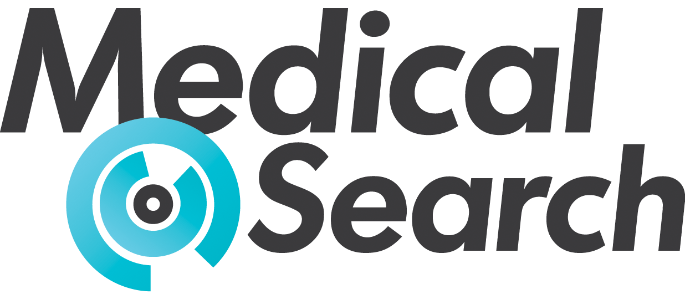









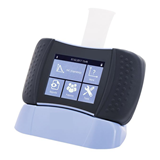


-160x160-state_article-rel-cat.png)


